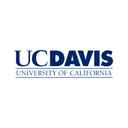What Is a University Acceptance Rate?
A university acceptance rate represents the percentage of applicants who receive an offer of admission. This metric serves as a key indicator of an institution's selectivity and competitiveness. For instance, lower rates, such as the Harvard acceptance rate of approximately 3.6% or the Stanford acceptance rate around 3.9%, signify intense competition and high prestige, particularly among Ivy League schools known for their rigorous admissions standards. In contrast, higher rates like the Penn State acceptance rate of about 49% or the Rutgers acceptance rate near 66% suggest more accessible admissions while maintaining strong academic standards.
Acceptance rates are influenced by various factors, including application volume, institutional capacity, and applicant quality. For example, the MIT acceptance rate hovers at 4.5%, reflecting its focus on top-tier STEM talent, while the UC Berkeley acceptance rate is around 12%, impacted by California's large in-state applicant pool. Understanding these rates helps students build balanced application lists, incorporating reach schools like those with the Yale acceptance rate of 4.6% alongside targets such as the Purdue acceptance rate of roughly 50%. To strengthen your application, consider aiming for competitive SAT scores and using our SAT score calculator to evaluate your performance and set realistic goals.
It's important to note that acceptance rates aren't static; they can vary year-to-year. The Northeastern acceptance rate has dropped to about 6% due to increasing popularity, while the University of Michigan acceptance rate (or UMich acceptance rate) stands at around 17%. Similarly, international institutions like the Oxford acceptance rate (around 17%) and Cambridge acceptance rate (about 21%) offer comparative perspectives for global applicants. Once you've navigated the admissions process, exploring available scholarships can help make your dream education more affordable and accessible.

23.00%

88.00%

8.80%

2.70%

5.40%

4.00%

7.70%

24.70%

11.90%

5.10%

36.00%

17.00%

19.00%

44.60%

21.00%

74.50%

9.90%

52.70%

11.50%

88.00%

87.00%

37.50%

89.10%

43.00%

10.60%

82.50%

5.30%

5.20%

49.10%

10.70%

31.00%

44.80%

17.10%

11.30%

47.50%
%20Jobs.jpg&w=128&q=75)
8.00%
Top University Acceptance Rates in 2025
In 2025, acceptance rates at top universities continue to reflect heightened competition. The Duke acceptance rate is approximately 4.8%, while the Vanderbilt acceptance rate mirrors this at 4.6%. Public powerhouses show varied selectivity: the UT Austin acceptance rate is about 29%, the UVA acceptance rate around 16%, and the UConn acceptance rate near 55%. For California schools, the UCLA acceptance rate stands at 9%, UC Davis acceptance rate at 37%, and SDSU acceptance rate around 39%. To be competitive for these selective institutions, aiming for strong SAT scores can make a significant difference in your application.
Private institutions vary widely: the Boston University acceptance rate is about 11%, Boston College acceptance rate 13%, and Tufts University acceptance rate 10.5%. The Cornell acceptance rate is roughly 7%, Notre Dame acceptance rate around 12%, and USC acceptance rate 10.4%. Other notables include the Clemson acceptance rate (or Clemson University acceptance rate) at 38%, Alabama acceptance rate 80%, and Howard University acceptance rate 35%. Use our SAT score calculator to evaluate your test results and better understand your chances at these competitive schools.
Liberal arts colleges often rival Ivy League schools in selectivity: the Amherst College acceptance rate is 7.43%, Barnard acceptance rate 8%, Pomona acceptance rate 7%, and Bucknell acceptance rate (or Bucknell University acceptance rate) 32%. Specialized schools like the Minerva University acceptance rate are as low as 1%, while the Babson acceptance rate is 22%. For medical aspirants, the Harvard Medical School acceptance rate is about 2.8%.
Regional favorites include the SMU acceptance rate at 52%, Lehigh University acceptance rate 37%, Holy Cross acceptance rate 36%, Fairfield University acceptance rate 52%, and Coastal Carolina acceptance rate 79%. Larger state schools like the Louisiana State University acceptance rate (74%), University of Hawaii acceptance rate (70%), and Pace University acceptance rate (83%) offer more accessible paths. The University of San Diego acceptance rate (or USD acceptance rate) is around 53%, Cal Poly Pomona acceptance rate 55%, and Oxford University acceptance rate 17%. After gaining admission, exploring available scholarships can help offset tuition costs and make attending these universities more affordable.
Acceptance Rate Comparison: Public vs Private Institutions
Public Universities
Public institutions generally feature higher acceptance rates due to larger capacities and in-state preferences. For example, the Rutgers University acceptance rate is about 66%, Purdue acceptance rate 50%, and UConn acceptance rate 55%. These schools balance accessibility with quality education, often rivaling privates in research and outcomes.
Private Universities
Private schools tend to be more selective, with rates like the NYU acceptance rate at 7.7% or Duke acceptance rate 4.8%. This selectivity stems from smaller class sizes, endowments, and focus on holistic admissions, attracting top global talent.
While selectivity is a factor, it's not the sole indicator of quality. Many public schools with higher rates, like the Michigan acceptance rate (or University of Michigan acceptance rate) at 17%, offer world-class programs comparable to Ivies.
Tips for Navigating Competitive Admissions
Facing low rates like the Cornell acceptance rate or Vanderbilt acceptance rate? Here's how to strengthen your application and increase your odds at dream schools.
Start Early
Research rates like the UT Austin acceptance rate or UVA acceptance rate well in advance to build a strategic list and prepare standout materials.
Show Authenticity
Highlight unique experiences that set you apart, especially for selective schools with rates like the Tufts University acceptance rate.
Ace the Personal Statement
Craft narratives that align with institutional values, crucial for overcoming low rates such as the USC acceptance rate.
Diversify Your List
Include a mix: reaches with low rates like the MIT acceptance rate, targets like the Clemson acceptance rate, and safeties such as the Alabama acceptance rate.
Understand Holistic Review
Beyond grades, emphasize leadership and impact—key for privates with rates like the Lehigh University acceptance rate or public ones like the SDSU acceptance rate.
Navigate Your Academic Journey with Confidence
Embarking on a career in higher education requires access to reliable resources and insights to make informed decisions. At AcademicJobs.com, we provide a wealth of tools to support your academic and professional aspirations. Whether you're exploring job opportunities or seeking to evaluate academic institutions, our platform offers comprehensive resources to guide you every step of the way.
Discover the quality of faculty and courses through Rate My Professor and Rate My Course, where you can access reviews and ratings from students and peers. These insights help you identify top-rated professors and courses that align with your academic goals, ensuring a rewarding educational experience.
For those evaluating institutions, our College Rankings provide detailed metrics on university performance, from academic excellence to campus culture. Additionally, Rate My College offers firsthand perspectives on student life and institutional quality, empowering you to choose the right academic environment for your career in higher education.
Frequently Asked Questions
Answers to common questions about university acceptance rates in 2025, including insights on Harvard acceptance rate, Stanford acceptance rate, UCLA acceptance rate, and more to help with your admissions strategy.
What is the Harvard acceptance rate for 2025?
The Harvard acceptance rate for 2025 is approximately 3.6%, reflecting intense global competition for spots at this iconic Ivy League university.
How does the Stanford acceptance rate compare to the MIT acceptance rate?
The Stanford acceptance rate is around 3.9%, slightly lower than the MIT acceptance rate of 4.5%, both underscoring their status as elite tech-focused institutions.
What factors influence the UCLA acceptance rate and UC Berkeley acceptance rate?
High applicant volumes and residency preferences drive the UCLA acceptance rate to 9% and UC Berkeley acceptance rate to 12%, making them among California's most competitive publics.
Is the Northeastern acceptance rate higher than the Boston University acceptance rate?
No, the Northeastern acceptance rate is lower at 6% compared to the Boston University acceptance rate of 11%, due to Northeastern's growing reputation for experiential learning.
What is the difference between public and private university acceptance rates, like Penn State acceptance rate vs. Duke acceptance rate?
Publics like the Penn State acceptance rate (49%) are higher than privates like the Duke acceptance rate (4.8%), owing to larger enrollments and different funding models.
How can I improve my chances given the low Yale acceptance rate or Vanderbilt acceptance rate?
Build a compelling profile with strong essays and extracurriculars to stand out against the Yale acceptance rate (4.6%) or Vanderbilt acceptance rate (4.6%).











